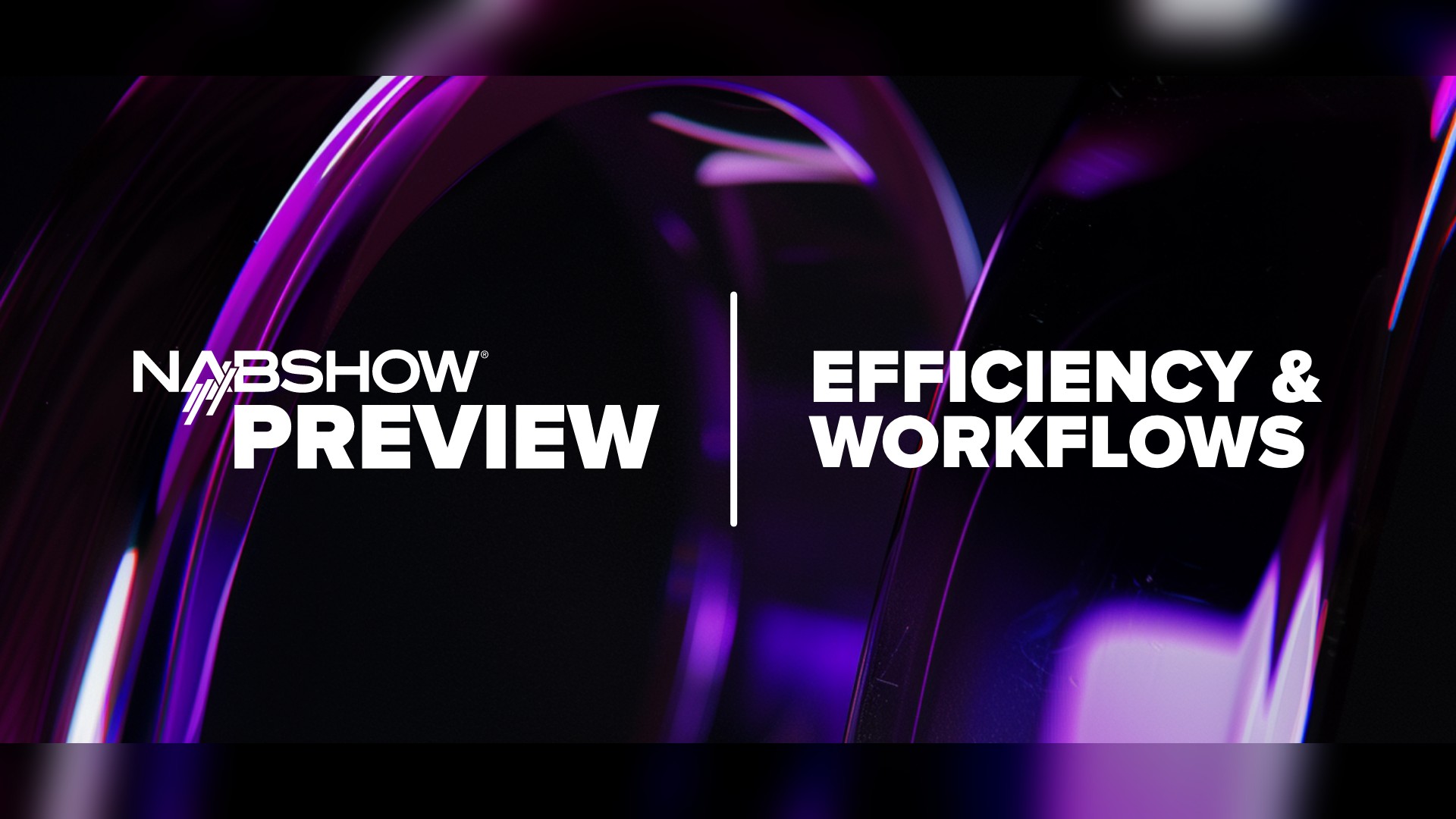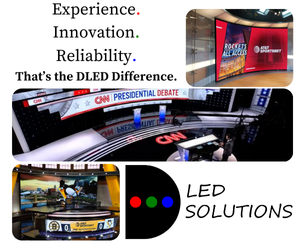NAB Show Preview: Operational efficiency in the spotlight as media companies unify workflows

Subscribe to NewscastStudio for the latest news, project case studies and product announcements in broadcast technology, creative design and engineering delivered to your inbox.
A clear theme is emerging in the broadcast and media sector today: the urgent need for operational efficiency across all media production and distribution aspects.
With financial pressures mounting and technology evolving rapidly, broadcasters and media organizations seek solutions that streamline workflows while maintaining quality. Ahead of the NAB Show, here are the trends driving the conversation.
Consolidation and unification driving operational change for broadcasters
The fragmentation of media workflows has created significant inefficiencies, with many organizations operating separate infrastructures for broadcast, streaming and on-demand or OTT platforms. Industry leaders point to workflow consolidation as a critical priority.
“Revenue isn’t growing as fast as it used to, and costs are rising,” said Steve Reynolds, chief executive officer, Imagine Communications. “The shift toward multiplatform distribution has introduced new expenses, as companies must now produce, format and manage content across broadcast, streaming, direct-to-consumer and mobile services.”
As an example, Reynolds noted that the initial approach to streaming often involved separate production chains.
“During the early days of streaming, many companies built separate infrastructures for each platform, resulting in redundant expenses without driving additional revenue. Now, the focus is on eliminating these inefficiencies by unifying production workflows,” Reynolds said.
This consolidation extends beyond just technical infrastructure to vendor relationships as well.
“We see optimizing media operations through vendor consolidation and cost reduction as a key focus for companies,” said Richard Andes, vice president of product management, Telestream. “Organizations are driving efficiency and streamlining workflows by minimizing touchpoints needed to prepare media for air when it comes to traditional supply chains and creative processes.”
Cloud transitions reshaping financial models
The shift from hardware-intensive production environments to cloud and IP-based workflows continues to alter how media companies operate financially, moving from capital expenditures to operational costs.
“Traditionally, media companies have relied heavily on capital expenditures for proprietary hardware and infrastructure,” said Kris Alexander, vice president of product and industry marketing, Zixi. “However, the current cost-conscious climate and the move to cloud has shifted the focus towards operational expenditures through IP-based, cloud-driven solutions, reshaping the financial dynamics of the industry.”
This transition requires a more sophisticated approach to analyzing costs.
“TCO is rarely fully recognized, and infrastructure and related costs are often overlooked when considering hardware expenses. Cloud and IP-based solutions demand a broader perspective, as their reliance on infrastructure is significant,” said Alexander. “To truly unlock the potential of cloud and IP technologies, a more comprehensive approach is needed, including a more thorough analysis of TCO that accounts for all associated costs.”
While cloud adoption offers flexibility, it also requires careful cost management.
“The cloud conversation has matured from hype to hard economics, with customers seeking guidance through the maze of storage costs, traffic expenses, and performance needs,” said Jan Weigner, chief technology officer, Cinegy. “Efficiency isn’t just a buzzword anymore; it’s a survival strategy in an industry where doing more with less has become the mandate.”
Many organizations are finding that a hybrid approach provides the best balance.
“We’re tracking the emergence of hybrid approaches that blend on-premises reliability with cloud flexibility – creating balanced systems that optimize both performance and costs,” said Weigner. “The trend we’re most encouraged by is the industry’s return to business case reality over technology infatuation.”
Media companies are paying particular attention to these ongoing costs.
“Increasingly, media businesses are also more cognizant about ways to avoid the heavy cloud egress fees that come with frequently moving in and out of public cloud environments,” said Rick Young, senior vice president of global products, LTN.
AI adoption moving from hype to practical applications
As artificial intelligence continues infiltrating the product pipeline, the focus has shifted from theoretical possibilities to practical applications that deliver measurable workflow improvements across the entire media pipeline.
“The AI conversation is finally maturing beyond hype to fixed-function applications that solve specific workflow problems with clear cost-benefit advantages,” said Weigner.
Media organizations are implementing AI strategically rather than as a blanket solution.
“Given the high cost of AI models for computer vision services, it’s essential for companies to define automation strategies that balance efficiency with cost-effectiveness,” said Blake Parrish, vice president of product management, Telestream.
These targeted AI implementations are already showing results in real-world production environments.
“In 2024, it seemed that AI was dominating the industry, but as we are entering the first quarter of 2025, AI is progressing and actually providing some valuable working solutions,” said Jane Sung, chief operating officer, Cinedeck.
For example, the integration of AI into quality control workflows is proving particularly valuable.
“Workflow optimization now focuses on unifying siloed processes — for example, integrating AI-driven diagnostics directly into encoding pipelines to preemptively flag quality issues or automate bandwidth allocation,” said Anupama Anantharaman, vice president of product management, Interra Systems. “Predictive analytics are helping teams prioritize fixes based on viewer impact, while tools for real-time metadata tagging streamline localization and compliance checks.”
This focus on practical AI applications extends beyond just production to audience engagement.
“Smarter workflows that deliver real results today will continue to drive the conversation at NAB 2025 – and AI is leading the charge,” said Sam Kamel, chief executive officer, Bitcentral.
Remote production and collaboration evolving
The pandemic accelerated remote production adoption, and media organizations continue to refine these workflows for long-term efficiency.
“Remote production remains a key focus, as broadcasters continue to reduce production costs by deploying technologies that minimize the need for large on-site crews,” said Matthew Williams-Neale, vice president of marketing, Appear. “This is also important for sustainability as the industry continues to reduce its environmental footprint.”
These distributed workflows create new challenges around asset management and collaboration.
“The explosive growth in content resolution and complexity is pushing traditional file sharing infrastructure to its limits,” said Ned Pyle, enterprise storage technical officer, Tuxera. “We’re seeing broadcast operations struggling with 4K/8K workflows and virtual production that demand real-time access to massive files across distributed teams.”
Ensuring efficient collaboration across these distributed environments requires new approaches to project management.
“Post-production doesn’t have to be so difficult. If we can encourage organizations to put the focus on the project, which is the fundamental unit of post-production, significant improvements to efficiency, security, and turnaround become possible,” said Derek Barrilleaux, chief executive officer, Projective.
Balancing innovation with practicality
The tension between digital transformation and practical business needs continues to shape purchasing decisions in the world of media and entertainment.
“We’re seeing a refreshing shift toward evolution over revolution – where incremental improvements delivering measurable benefits take precedence over flashy but impractical innovations,” said Weigner. “The growing recognition that operational efficiency directly impacts bottom-line results is validating our long-standing approach to software-defined television.”
The industry is also seeking more adaptable solutions that adjust to evolving requirements.
“Today’s media service providers need to be able to scale operations, adapt according to changing audience demands and navigate often complex workflows which span both cloud and hardware environments – all while keeping costs in check,” said Williams-Neale.
This focus on practical solutions is driving workflow automation and laying a roadmap for the future.
“The industry is looking for ways to reduce complexity, automate manual tasks, and increase the reliability of live video workflows,” said Chris Clarke, chief revenue officer and co-founder, Cerberus Tech.
The convergence of workflow efficiency, cost management and practical innovation will shape discussions on the show floor and point the way toward the broadcast industry’s future.
Subscribe to NewscastStudio for the latest news, project case studies and product announcements in broadcast technology, creative design and engineering delivered to your inbox.




tags
Anupama Anantharaman, Appear, Automation, Bitcentral, Blake Parrish, Broadcast Automation, Broadcast Workflow, Cerberus Tech, Chris Clarke, Cinedeck, Cinegy, Derek Barrilleaux, hybrid, Imagine Communications, Interra Systems, Jan Weigner, Jane Sung, Kris Alexander, LTN, Matthew Williams-Neale, NAB Show 2025, NAB Show News, Ned Pyle, Projective Technology, Richard Andes, Rick Young, Sam Kamel, Steve Reynolds, Telestream, Tuxera, workflow, Zixi
categories
Broadcast Automation, Broadcast Engineering, Heroes, NAB Show, Remote Production